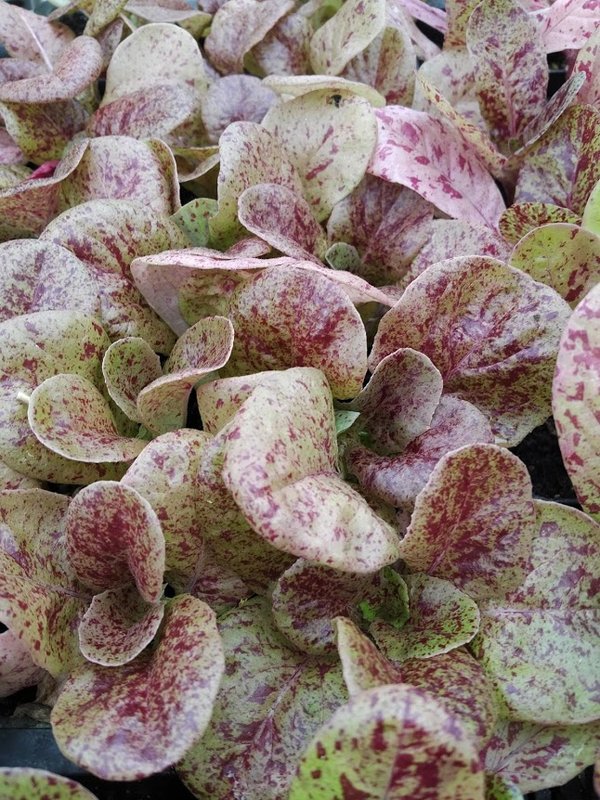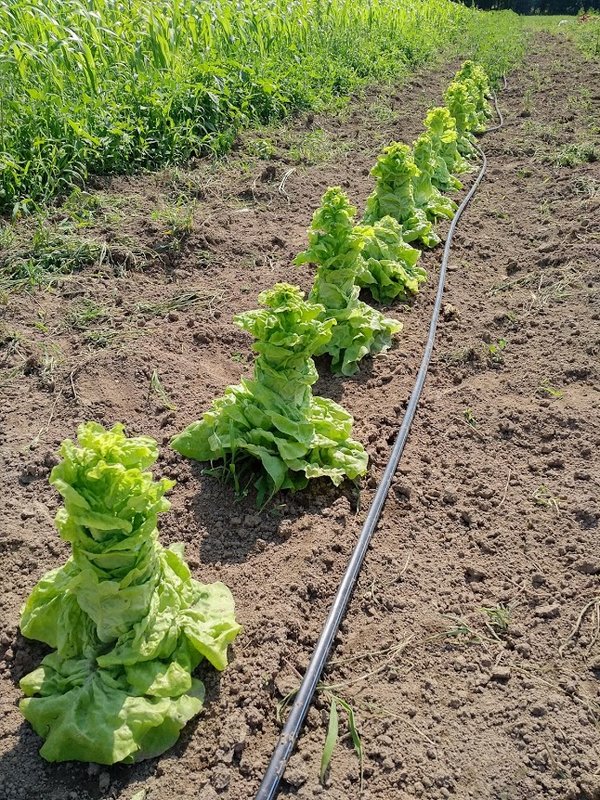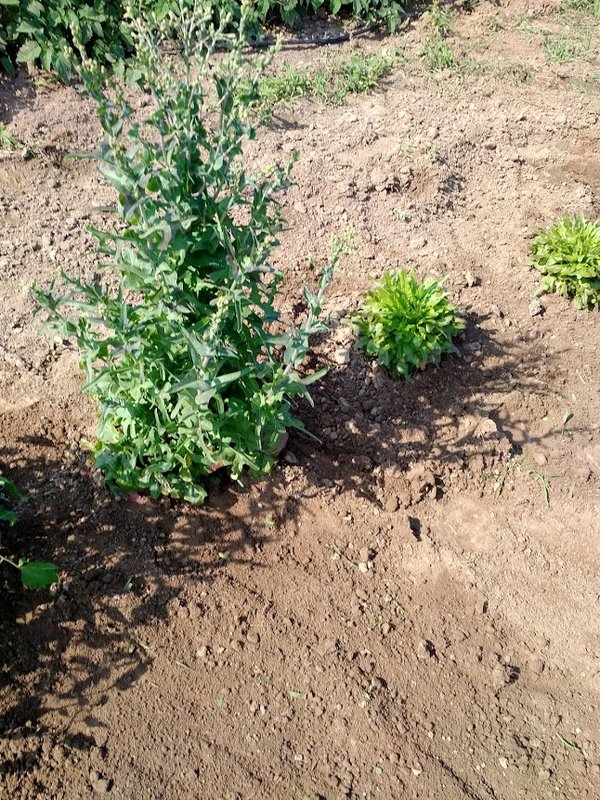How to Select Better Lettuce Seeds

Bob Wildfong
Are you saving lettuce seeds this year? Maybe you're growing lettuce and wondering about saving some seeds? It isn't too late, and this is the perfect time to make some "selections" to make your seed the best it can be.
Lettuce is among the easiest vegetables for saving seeds, because it's an annual and it mainly self-pollinates. That means it produces flowers and seeds in one summer, and insects don't tend to carry pollen between flowers, so your saved seeds won't be crossed with nearby varieties.
We advise keeping your "seed lettuce" at least 20 feet apart from other varieties, just to make sure it doesn't cross, but that distance only matters if the other varieties are allowed to bloom. If you grow other varieties of lettuce just for eating, and you don't let them grow flowers, then you can grow them as close as you want. Allow some of your lettuce plants to grow "too tall", well past the time when they're good to eat. They will grow flower stalks about 4 feet tall, and lots of yellow flowers that look like tiny dandelions. Just like those relatives, the flowers turn into fluffy balls with seeds hidden underneath. You can pick lots of seeds from the fluffy parts when they're dry on the plant: just a few pinches should give you enough to replant a row!

Victoria lettuce beginning to grow flower stalks
Now for the experienced lettuce grower, here's how you can make your seeds better year after year. While we say that lettuce is mostly self-pollinating, it does happen that a little pollen gets where it shouldn't, so there is always cross pollination. You've probably seen a row of lettuce where the plants all look the same, except for one or two that have a different shape or colour. If you're growing a variety like Jester lettuce that has a little genetic variability, you'll also notice that some of the plants aren't quite what you expect. To save the best seeds, simply be sure to save them from the plants you like best!
Lettuce is an easy plant for selection, because you can see and taste exactly what you're going to get long before the flowers pollinate. If you see a lettuce that isn't what you want next year, eat it. If you see one that is exactly what you want next year, let it grow to seed. It seems almost too simple, but the rewards are huge.
Here are some specific things to look for:
- When lettuce plants are very small, from the seedling stage to 6 leaves, remove any that have lower vigour. If you remove 10% of the weakest seedlings every year, you will breed an overall stronger variety.
- As plants grow up, remove any that bolt (grow a flower stalk) much earlier than the rest. It might be tempting to save seeds from these plants, since they're conveniently giving you seeds, right? But if you save these seeds you'll just breed an early-bolting variety that you'll regret later.
- At the eating stage, look for plants that have good colour, texture, and shape (from above and from the side). Take a few leaves and taste them. If you find any that don't measure up to your expectations, cut them and eat them. You can eat some of the good lettuce too, but whatever you leave for seed should be the best all-round examples.
- As the flowers grow and mature, look for off-types then too. Sometimes a genetic variant doesn't show itself until it reaches the flower or even the seed stage.

Mini Oak Leaf lettuces planted from the same seeds. The plant on the left is obviously an early-bolting off-type, so it will be removed and discarded.
For an example of this process, see our "Roguing and Selection" sheet for Jester lettuce.
It can be difficult to be selective if you only have a small number of plants, and it's hard to let your best plants go to seed instead of eating them. But if you do, then your seeds will bear more of those great lettuces next time, and you'll be glad you took the extra effort to be diligent.
Plant breeding and improvement is something that amateurs can do, but some species are easier to work with than others. Lettuce is among the easiest for amateurs to select and improve, because it's straightforward to evaluate the plants before pollination. Even if you just want to save some of your own seeds for fun, lettuce is a rewarding plant for any seed saver because it's interesting to see it grow, easy to collect the seeds, and the results are evident right away.
Happy seed saving!
--
Bob Wildfong is Seeds of Diversity's executive director
Photo: Amish Speckled lettuce
Not yet a member?
An annual membership to Seeds of Diversity gives you access to our seed exchange, seed grow-out programs, and our online news.

We depend on donations to do our work.

Thank you for your support!
